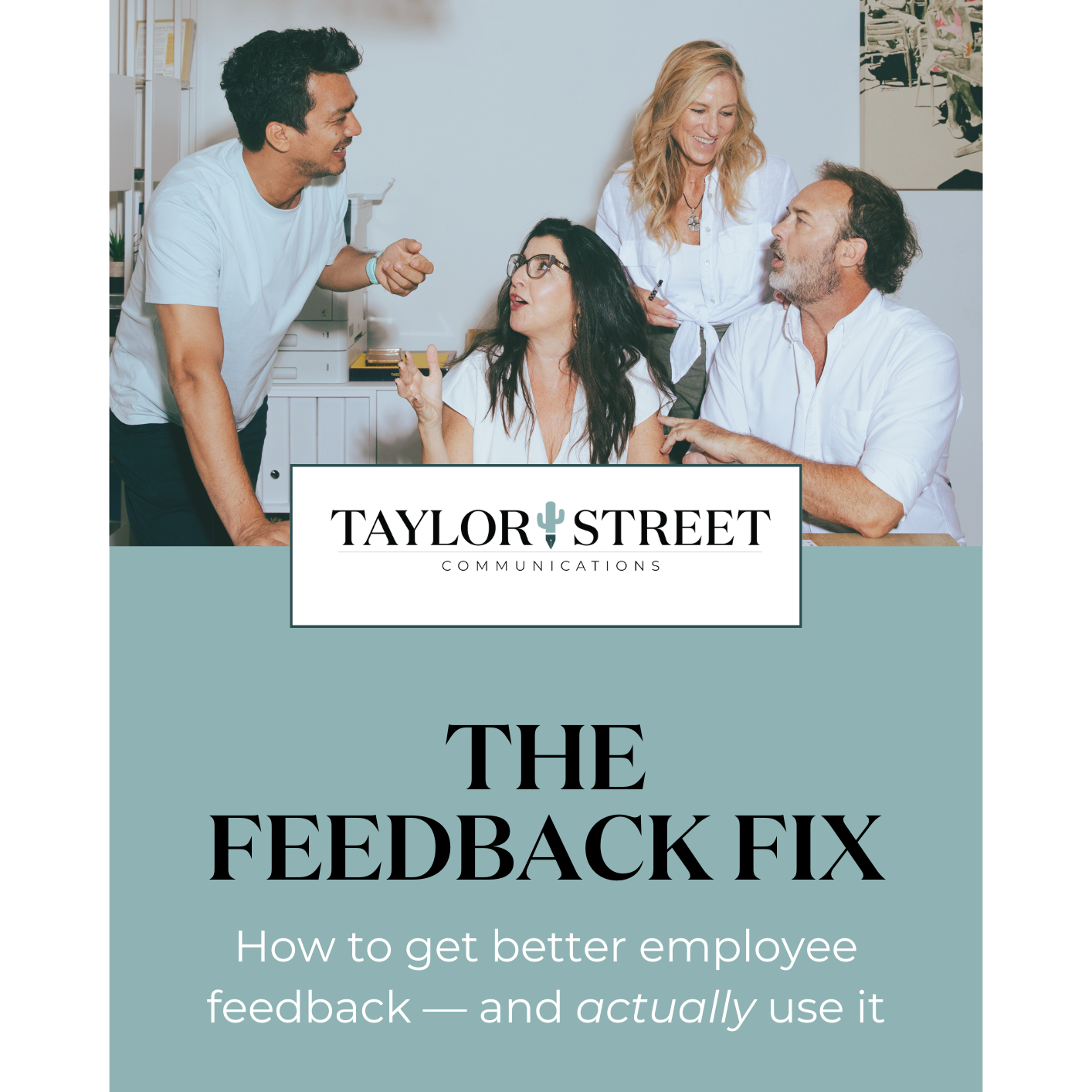Employee feedback fatigue: 5 reasons surveys suck
Your employees are tired of surveys. Not just annoyed. Not just bored. We’re talking full-on feedback fatigue. Because too many companies treat surveys as checkboxes — not a meaningful part of their change management or employee engagement strategy.
I’m breaking down five reasons employee surveys don’t work, and offering a bite-sized checklist for each one to help you turn it around. Because if you’re serious about listening to your team, you need more than half-baked questions and good intentions.
1. Nothing ever changes.
“Thanks for your feedback” is code for, “We won’t be implementing it.”
Man, if I had a dollar for every employee survey I’ve taken that led nowhere … I might’ve spent it on some much-needed therapy to help me deal with my job. Before you launch another questionnaire, ask yourself: What will you actually do if you don’t like the results? If you think surveys are valuable for your team, you must follow them with action — otherwise no one will take them seriously. And beyond that, you owe everyone transparency about the results.
Checklist for applying feedback, not just saying you will:
Have you publicly acknowledged past survey themes or frustrations?
Do you have a process (and timeline) for reviewing and acting on feedback?
Is someone accountable for follow-through, not just collecting data?
Are you ready to change, even if the feedback stings?
2. They’re not anonymous — and we all know it.
Employees aren’t stupid. Not asking for names doesn’t mean you don’t know who they are.
Depending on the company/department, it’s pretty easy to figure out who’s saying what. Even if you make every effort to keep surveys anonymous, your employees will have at least some level of uneasiness or mistrust. And if there’s the slightest chance they could be identified when giving less-than-stellar feedback about people above them, they probably won’t do it. Would you?
Checklist for maintaining (and communicating) anonymity:
Have you clearly explained how anonymity is protected (tools, data cuts, etc.)?
Are you limiting demographic questions to only what’s truly necessary?
Have you avoided open text boxes that could be traced back to someone?
Are you modeling psychological safety so people actually believe they can speak freely?
In a feedback state of mind?
Go deeper than surveys. The Feedback Fix is a free guide to getting better insights from your people — and turning feedback into trust, clarity and real engagement.
3. It’s all about the company, not the people.
There’s a huge difference between “improving employee feedback” and prioritizing people’s well-being.
Before I decided to start my own business, one of the things that pushed me over the edge was a return-to-office mandate. I wasted no time in telling management that I wouldn’t come in three days a week for multiple reasons, like my nightmarish commute and the fact that my job as a writer was much easier to do at home.
The responses I got were word salads. Lots of “let’s keep dialoguing” and “I appreciate your feedback.” In the following weeks, I received — you guessed it — a survey asking questions about how leadership could make my job easier at the office with the new hybrid schedule.
The new focus was on seating arrangements, desk decor and free snacks. It’s a classic example of not listening, not implementing feedback and deflecting to topics that are beside the point.
Checklist for putting people first:
Do your questions show genuine interest in how people feel, not just how they perform?
Have you included space for personal experiences and suggestions — not just ratings?
Are you asking what the company can do better, not just what employees can do more of?
Would your employees say these questions reflect what they actually care about?
4. They’re too frequent, too vague or both.
“Pulse check”? More like kiss of death.
The combination of sending too many surveys and never implementing the feedback is one of the worst things you can do. Take that approach with employees who are already overloaded, and you’re looking at a totally checked-out team.
Instead, space them out, and make them incredibly easy to answer. Asking questions like, “Do you feel valued?” will only confuse people: Valued by whom? My manager? My peers? The organization as a whole? And valued in what way — emotionally, financially, professionally? A much clearer question is, “Do you feel your contributions are recognized by your manager?” or “Do you receive meaningful feedback that helps you grow?”
Checklist for balanced, clear requests for feedback:
Are you sending surveys only when you’re prepared to act on the input?
Are your questions specific enough to give you clear, usable insights?
Have you communicated why you’re asking now, and what’s different this time?
Are you tracking how often you survey and balancing it with other forms of listening?
5. They dodge the hard questions.
If you’re afraid to ask what’s broken, don’t be surprised when it stays that way.
The experience I shared above about the return-to-office fiasco is a perfect example of leadership failing to ask hard questions. Even worse, they already knew the answer and pretended they didn’t.
Frankly, I had nothing to lose at the time because I knew my days with the company were limited, but even before that, I was always forthcoming with feedback — requested or not. Most employees, however, won’t tell people four levels above them what they could do better, and I don’t blame them. So, it’s on leadership to ask questions, even if they’re afraid of the answers.
Checklist for asking the right questions:
Are you asking about psychological safety, leadership trust and team culture, not just workload or perks?
Have you invited open-ended feedback on what isn’t working?
Have you included questions about inclusion, fairness or burnout?
Are you prepared to name the elephants in the room and actually do something about them?
Asking is easy. Acting is everything.
At the end of the day, a survey is only as good as what comes after it. If you’re not prepared to really listen and act with clarity, courage and conviction, don’t ask the question. Employee engagement isn’t a checkbox. It’s a relationship. And like any relationship, it requires trust, honesty and follow-through. So go ahead, send the survey — just make damn sure it means something.


